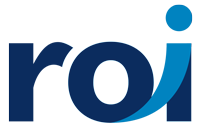In today’s complex healthcare environment, optimizing IT resources is crucial for improving patient care and reducing operational costs. Application rationalization can help healthcare systems streamline their IT ecosystem, eliminate redundancies, and achieve significant cost savings. Jeff Tennant, ROI’s EVP of AI / HIS Strategy & Services, offers valuable insights on how healthcare organizations can benefit from application rationalization.
Understanding Application Rationalization
Application rationalization starts out with creating a comprehensive inventory of all applications used within a healthcare organization. As Jeff Tennant states, “The key deliverable from phase one is a complete application catalog.” This catalog should include version information, business and technology owners, and vendor contacts for each application. Jeff elaborates, “A complete application catalog lists all applications in your ecosystem. Identify business and technology owners for each application and list vendor contacts for SaaS applications.”
This inventory allows healthcare systems to understand the full scope of their IT assets, enabling them to make informed decisions about which applications are necessary and which can be decommissioned.
The Cost of Unused Applications in Healthcare
Unused or redundant applications can drain a healthcare system’s resources. Jeff emphasizes, “Organizations often throw money away on unused applications. Identifying and decommissioning unnecessary applications can lead to significant savings.” The costs associated with unused applications include maintenance fees, licensing costs, and the burden on IT staff responsible for their upkeep.
Jeff notes, “Staff responsible for maintaining unused applications are a burden. Utilizing server time and storage space for unused apps costs money.” By identifying and removing these applications, healthcare organizations can reduce costs related to maintenance, IT staff resources, and server utilization.
Millions in Potential Annual Savings on the Table
The impact of application rationalization in healthcare can be profound. Jeff shares a story of a large health system with multiple hospitals that ROI helped achieve significant cost reductions by identifying and decommissioning redundant applications: “We’ve shown year-over-year savings of about $6 million. Annual savings continue as long as unused apps are removed.”
These savings are not just immediate but ongoing. Jeff explains, “Annual savings continue as long as unused apps are removed. Savings from rationalization can be significant.” This highlights the importance of maintaining an up-to-date application catalog and regularly reviewing it to ensure continued efficiency.
Starting the Journey
Jeff stresses the urgency of beginning the application rationalization process: “Don’t wait to start an application rationalization project. Every month you wait costs the organization money.” For new CIOs in healthcare, he advises prioritizing an understanding of their application ecosystem: “A new CIO should prioritize understanding the application ecosystem. Get a good understanding of what’s in your ecosystem.”
Healthcare systems can benefit from working with experts like Jeff Tennant and his team. “Reach out to experts for a customized strategy. Work with experts to build an application catalog,” Jeff suggests. By leveraging the expertise of professionals, healthcare organizations can develop a tailored approach that fits their specific needs.
Effective Governance and Data Retention
Governance is crucial for the success of application rationalization in healthcare. Jeff highlights the importance of a diverse and inclusive governance structure: “Effective governance involves a diverse group of stakeholders. A broad governance team ensures balanced decision-making.” This ensures that decisions are made with the best interests of the healthcare organization in mind.
Proper data retention policies are also essential. Jeff advises, “Only keep necessary data to avoid legal issues.” By complying with data retention laws and regulations, healthcare systems can mitigate risks and maintain data integrity.
Improved Efficiency and Reduced Complexity
Application rationalization can lead to improved efficiency and substantial cost savings in healthcare. Jeff notes, “Consolidating applications reduces complexity.” For instance, by identifying redundancies and working with business owners to consolidate applications, healthcare systems can streamline operations and reduce their application footprint.
Cross-training staff to use consolidated applications can also improve efficiency. This is particularly beneficial in healthcare, where staffing concerns are always a priority.
Conclusion
Application rationalization is a strategic initiative that can transform healthcare systems by optimizing their IT ecosystem and reducing costs. Jeff Tennant’s insights provide an overview of what’s possible for healthcare organizations looking to achieve these benefits. By starting the process early, engaging experts, and maintaining effective governance, healthcare systems can unlock the potential for a more efficient and cost-effective IT environment.
Remember Jeff’s key message: “Savings from rationalization can be substantial. Regular reviews keep the ecosystem optimized. Effective governance is essential for success.” Begin your application rationalization journey today and improve your healthcare system’s operational efficiency and financial health. Schedule a free consultation with our team to learn how you can benefit from application rationalization.





